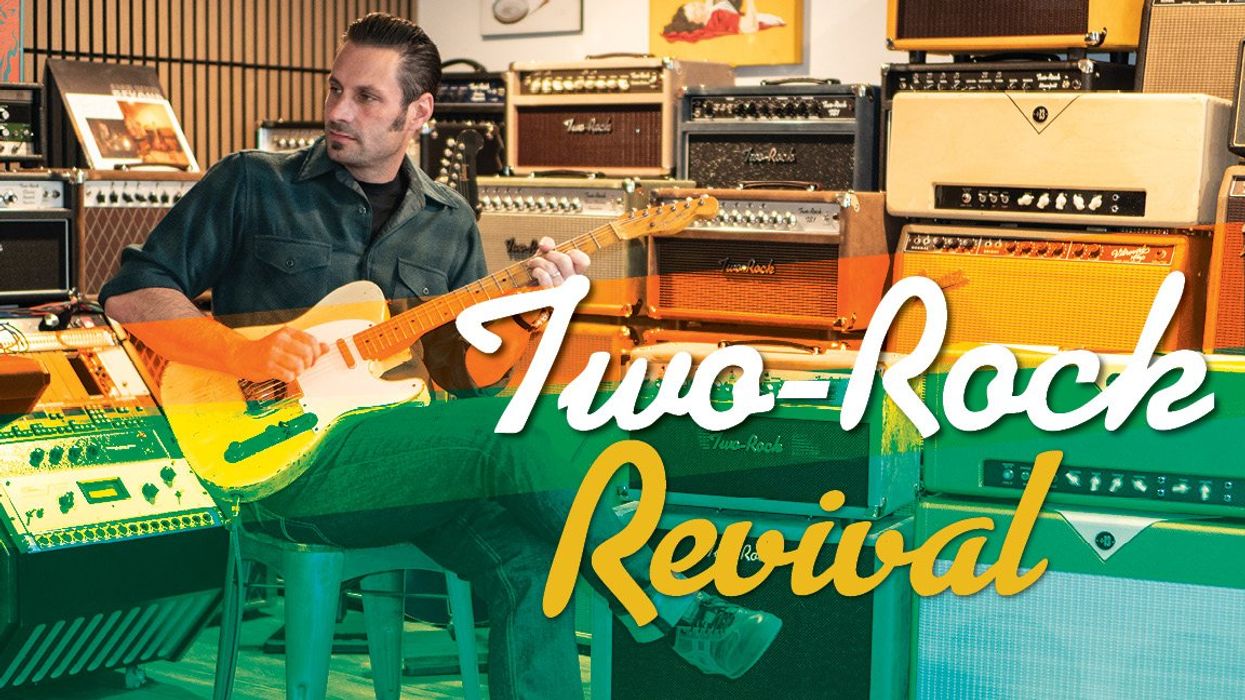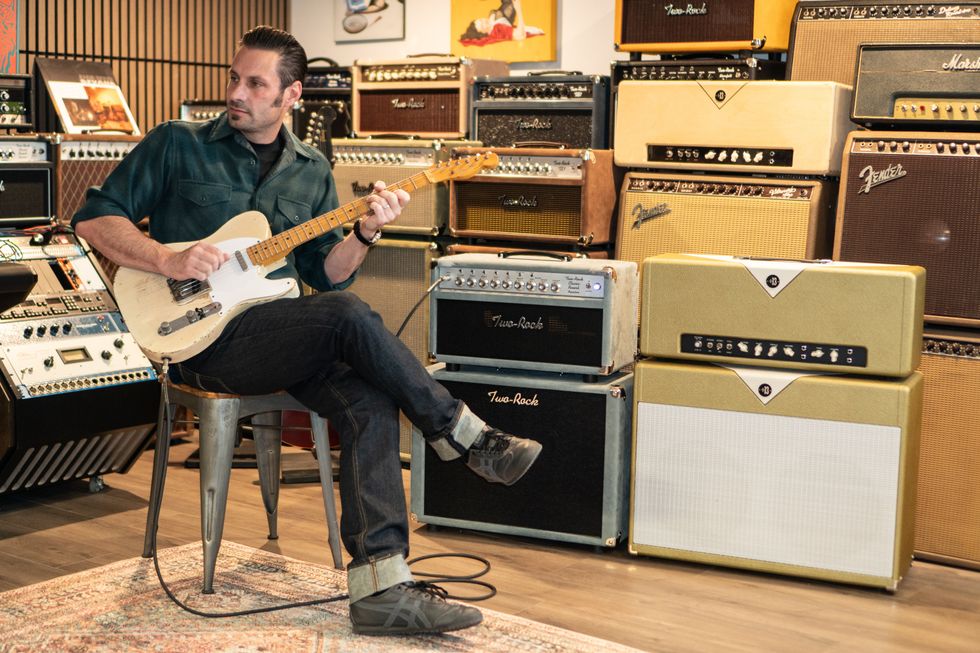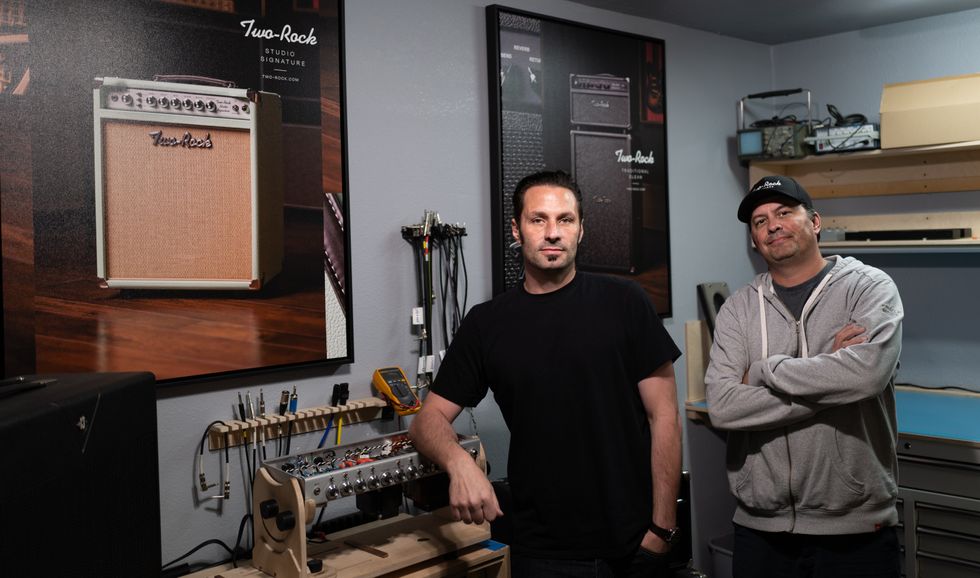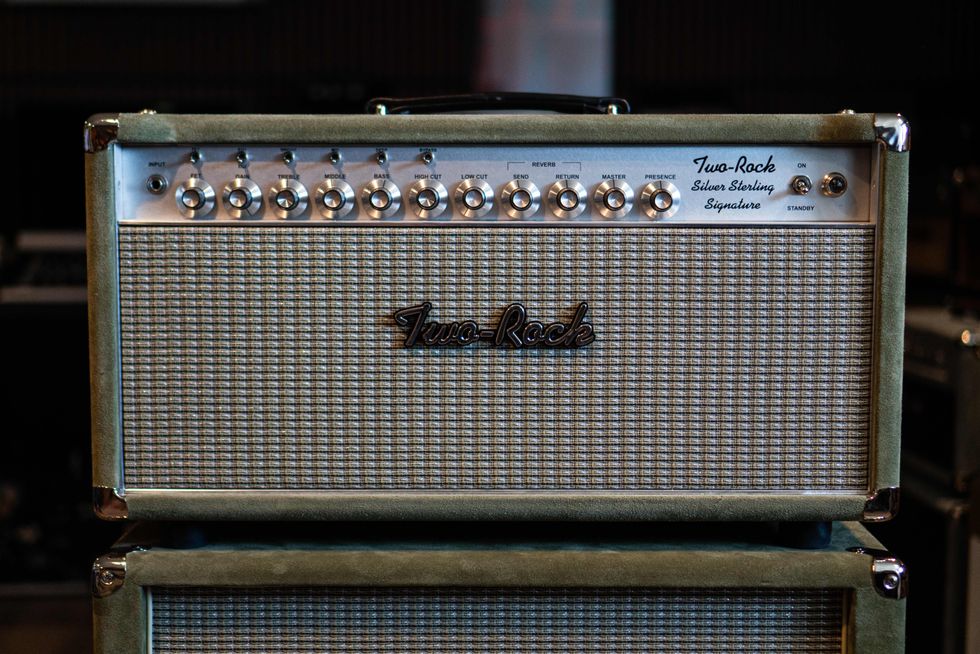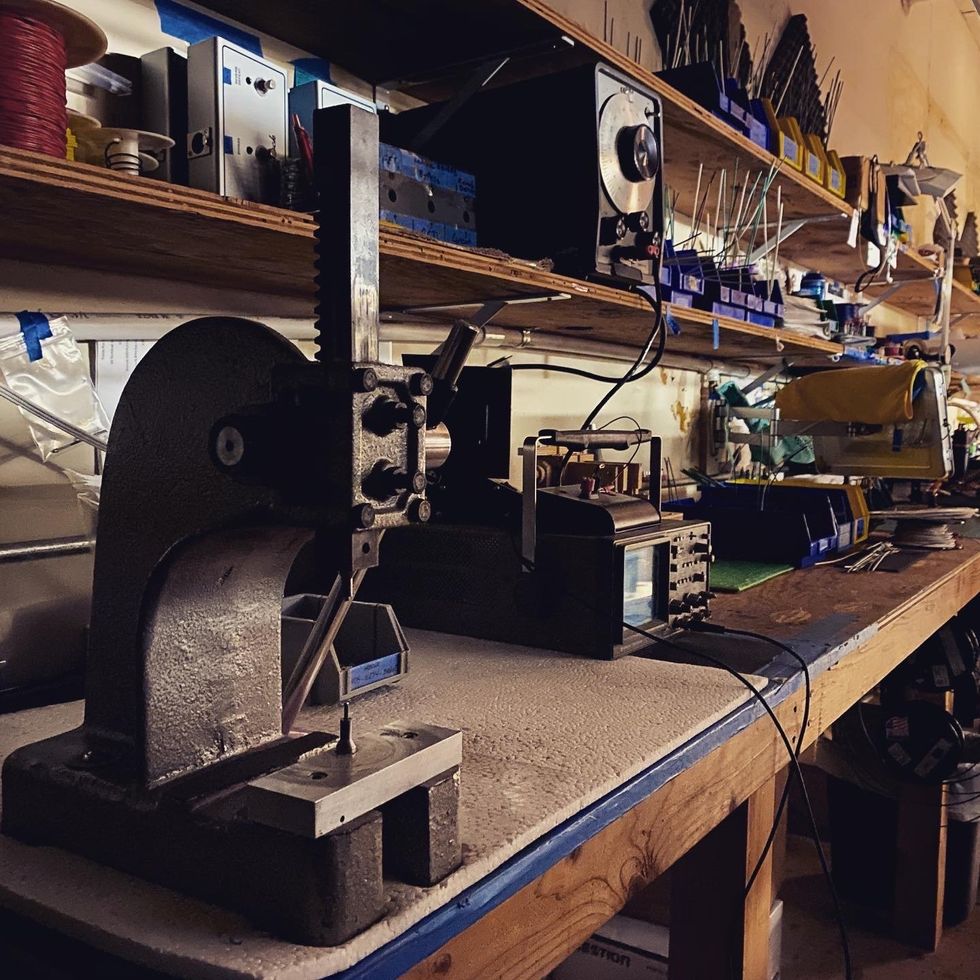Guitar players wanting to catch the Grateful Dead’s particular lightning in a bottle exist along a spectrum. Some are content to take inspiration from Jerry Garcia’s playing but make their own way regarding guitar choice and signal path. Others strive to emulate Garcia’s sonic decisions down to the most minor details and create signal paths as close to Jerry’s as possible. In recent years, an ecosystem of gear has developed around fostering Jerry Garcia’s electric tone, including everything from guitars, amps, and stompboxes to on-board preamps and speakers.
Entire books about the Grateful Dead’s gear have been written, so we can’t cover it all here. Garcia tinkered with all facets of his sound from about 1971 until 1978, when his signal path reached stability. By then, his On-Board Effects Loop—an innovation he developed to control how much signal reached his effects—was dialed in, his backline firm, and his choice of effects pedals solidified. Even then, adjustments were made, especially when MIDI arrived or when technology like in-ear monitoring was used. Here are some basics.
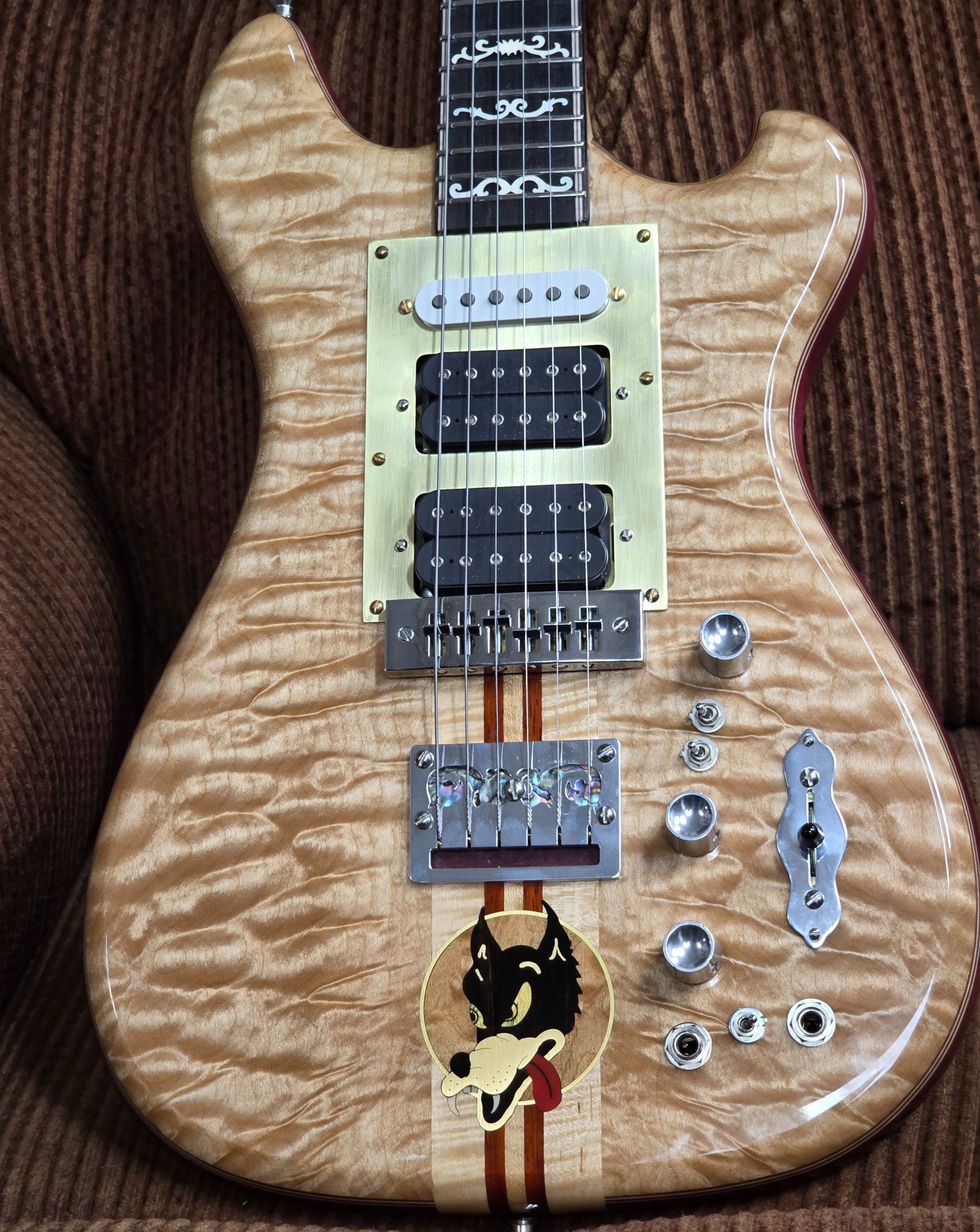
Scarlet Fire’s recreation of Garcia’s Wolf, originally built by Doug Irwin.
It starts with guitars. For players wanting to get their Jerry on, there’s a wide range of Garcia-esque instruments—with just as wide a range of prices—out there. Recreations of the Doug Irwin guitars and the Fender Alligator Strat abound. China-built models from companies like Phred Instruments can go for as little as $700 or so. Luthier Thomas Lieber apprenticed with Irwin long ago, and his Lieber Guitars will deliver a copy of a variety of Garcia models. Leo Elliott’s Scarlet Fire Guitars out of Dallas, Texas, takes things in another direction. Elliott builds Doug Irwin replicas that start at $20,000 and go up from there, with a current wait time of about 18 months for an instrument. He’s outfitted many of the top Garcia guitarists today, including Zach Nugent and Jeff Mattson. Elliott says, “I’m a self-taught luthier; I didn’t really build my first guitar until 2010. I understood a little bit about woodworking before I got started, but I learned by reading books and through trial and error. I started building replicas of Doug Irwin’s Wolf guitar right away, which is sort of like building a car and starting with a Ferrari. I didn’t know any better. Then, eventually I got to know Doug Irwin and collaborated with him. So, I got to hold Garcia’s Tiger guitar and get to know it really well. There’s one guy who helps me around the shop, but otherwise, I am building these guitars on my own. I’m collaborating with Doug Irwin on a new series of Tiger guitars, which will retail for 50 grand each.” That’s one way to get your Jerry going.
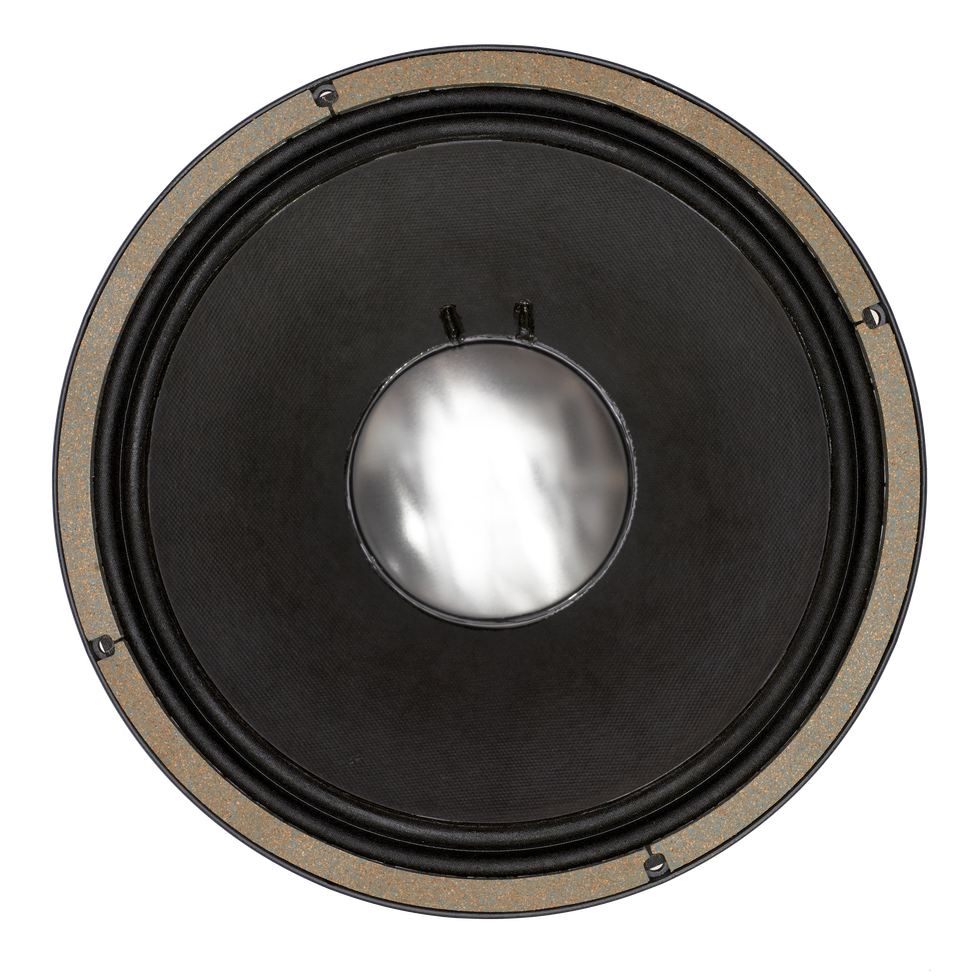
The JBL-inspired Milkman K-120.
Garcia’s choice of amplifiers is another matter. He preferred Fender Twin Reverbs loaded with JBL Alnico speakers, which were popular amongst many rock bands in the 1970s. The details get complicated; Garcia’s amps were heavily modified, and the Fender Twin served as a preamp that ran to a McIntosh MC-3500 power amp.
It’s hard to find vintage JBL speakers today—at least ones in good shape. San Francisco’s Milkman Sound, founded by Tim Marcus, has created a faithful reproduction of those classic JBLs they call the K-120. They’re coupling those speakers with a Garcia-style recreation of his Fender Twin that Marcus named the JG-40. “I think 75 percent of Jerry’s tone is in the JBL speakers,” Milkman’s founder says. “But when you start to analyze the other 25 percent, you kind of have to start with Don Rich. [Editor’s Note: Rich was the guitar player in Buck Owens’ band, pioneers of the Bakersfield Sound.] That’s Jerry’s tone, too, but the difference is Garcia’s midrange was a bit throatier. It sounds clean, but really, it’s not clean at the same time. Especially his tone in the late ’70s. There is something about running that Fender Twin Reverb through the McIntosh that would just completely blow out the tone in a really interesting way.”
Garcia colored his tone with off-the-shelf effects. This was, after all, long before the days of boutique pedals. By 1978 and beyond, you’d hear him playing through an MXR Distortion+, an MXR Analog Delay, and an MXR Phase 100. He often used auto wahs, preferring the Musitronics Mu-Tron envelope filter as well as a Mu-Tron Octave Divider and a Mu-Tron combination volume and wah pedal.
When I asked Jeff Mattson, Bella Rayne, and Tom Hamilton Jr. exactly how orthodox they are about using the kind of gear that Garcia did, I got three different answers.
Mattson tells me that because Dark Star Orchestra is doing something very specific, he really has to tailor his sound as carefully to Garcia’s as he can. “Some folks get too hung up on small things, like what kind of cable to use and things like that, and I don’t go that far. But it’s important for Dark Star Orchestra to get Jerry’s sound right because we are covering different eras and different shows. In 2022, for example, we went to Europe and recreated shows from the Dead’s famous Europe ’72 tour, so you have to pay close attention to what kind of gear they were using to do that right.”
Hamilton works differently. He’s always preferred a higher-gain signal than Garcia ever did, landing in more of a British or heavy metal tone. (Randy Rhoads was a big influence.) “I’ve always approached it like, ‘What’s the new information we can put into this thing?’” he says. “Not just recreate but pushing in a forward direction. And anytime I’ve played with the guys who played with Garcia back in the day, they always said to me, ‘You’re here because you’re here. Don’t try and do what we did back in 1978 or do it because Garcia did it that way.’ They’ve always encouraged me to be myself.”
Bella Rayne is just wrapping her head around what it really means to try to sound like Garcia. “Besides Jerry, I’m influenced by guitarists like Dickey Betts and Derek Trucks, so my tone tends to be a bit heavier and bluesy,” she explains. “I’m generally running a Stratocaster through a Fender Twin Reverb. But recently, I was doing a show, and a buddy of mine set up a Jerry rig for me, and that was so cool: JBL speakers, McIntosh head, the whole setup. I had never played through one. I didn’t know what the hype was all about. I plugged in, and it was just amazing; there was such a snap, and I was really commanding the band. I can see myself keeping my current rig but adding a Dead-rig to experiment. But honestly, anything is fine; I am not picky. I just want to play the best that I can.”
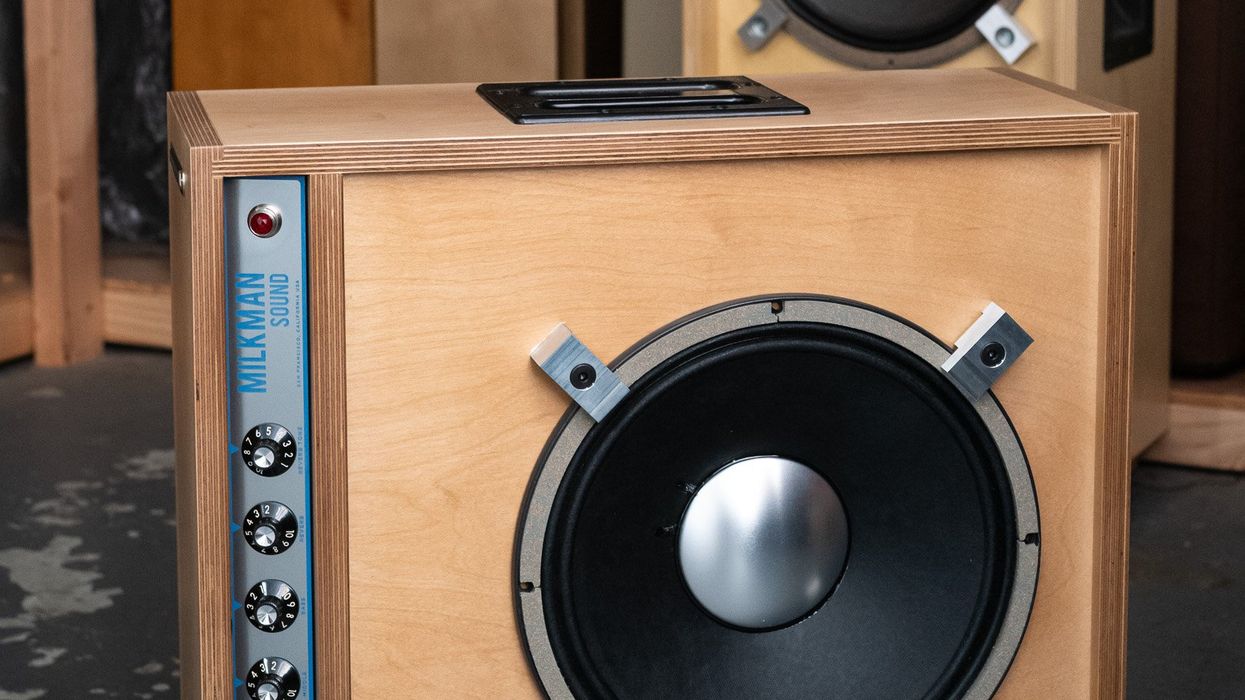




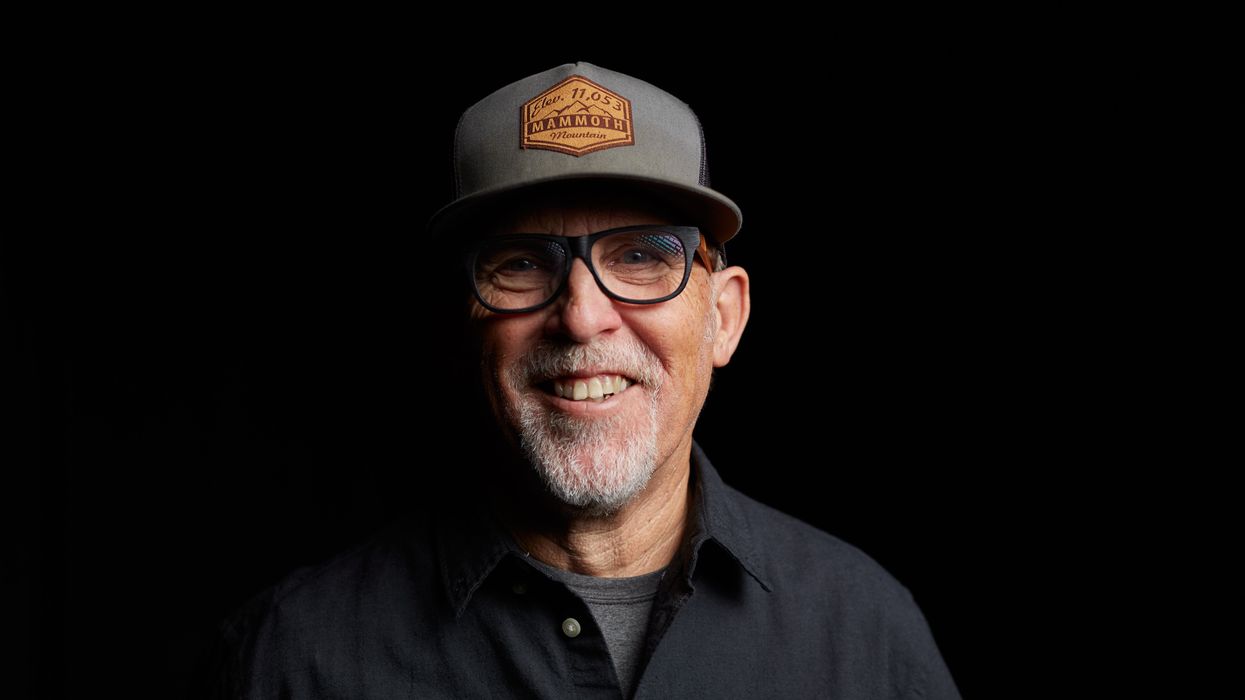

![Rig Rundown: AFI [2025]](https://www.premierguitar.com/media-library/youtube.jpg?id=62064741&width=1245&height=700&quality=70&coordinates=0%2C0%2C0%2C0)

![Devon Eisenbarger [Katy Perry] Rig Rundown](https://www.premierguitar.com/media-library/youtube.jpg?id=61774583&width=1245&height=700&quality=70&coordinates=0%2C0%2C0%2C0)












